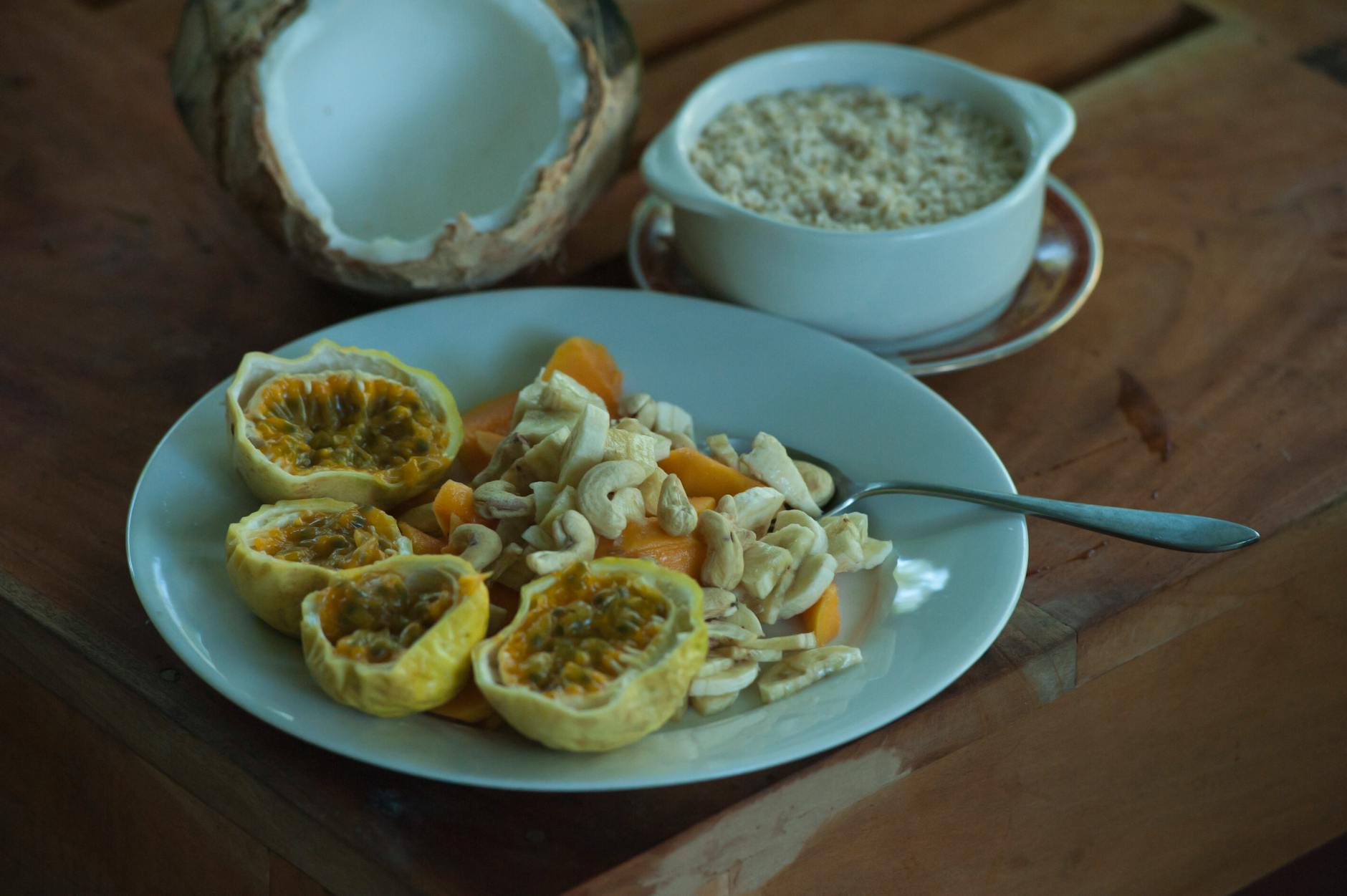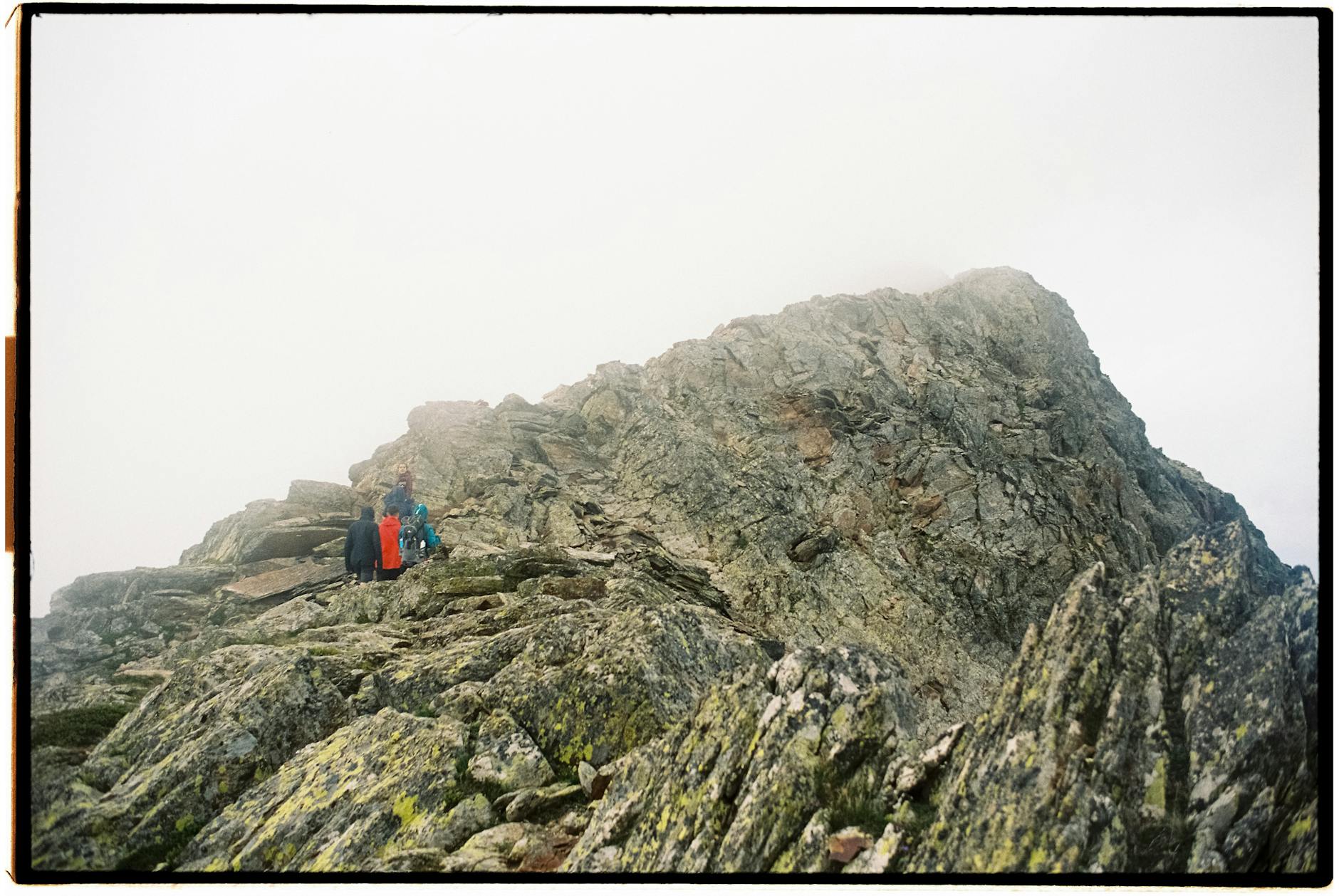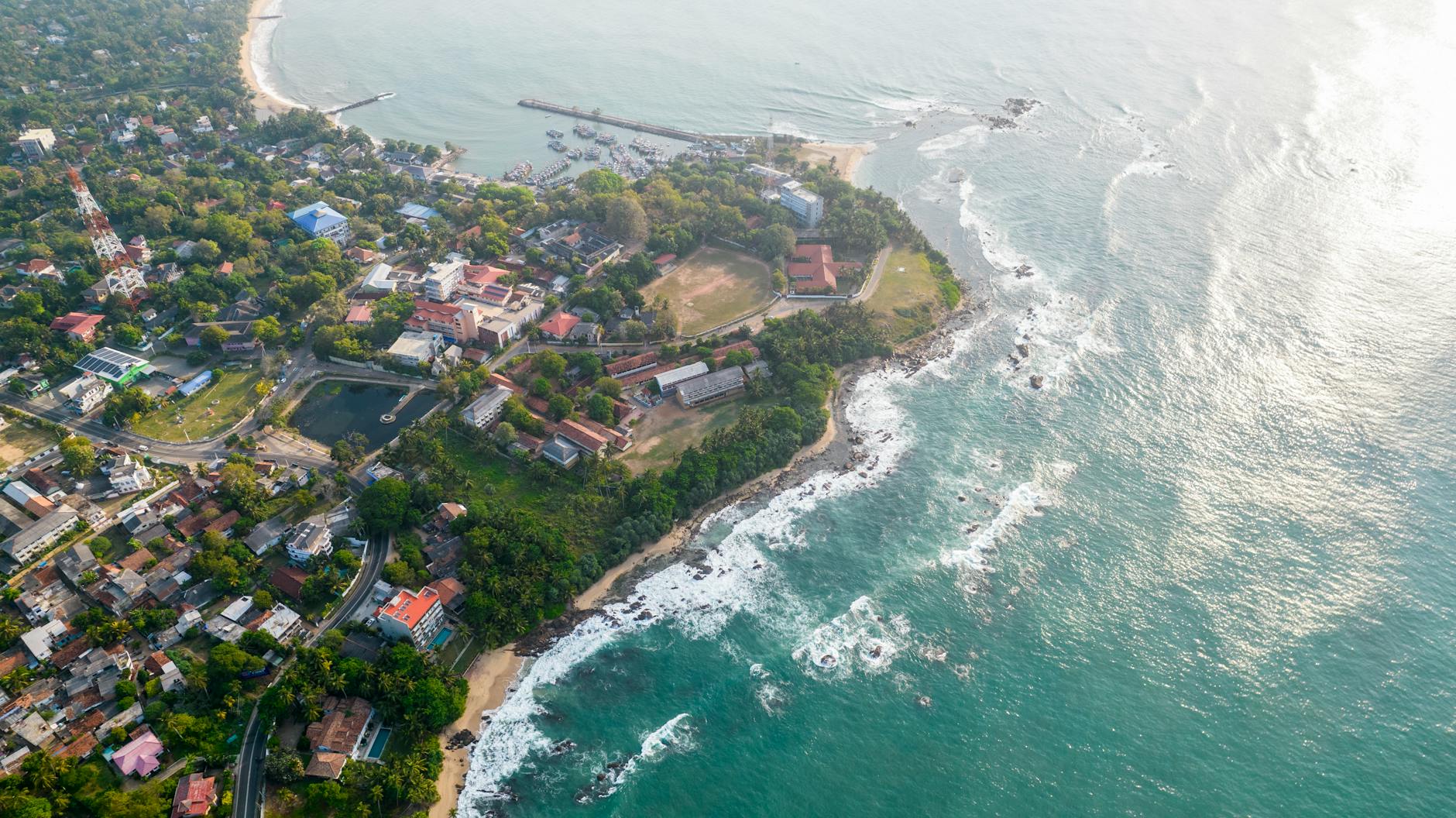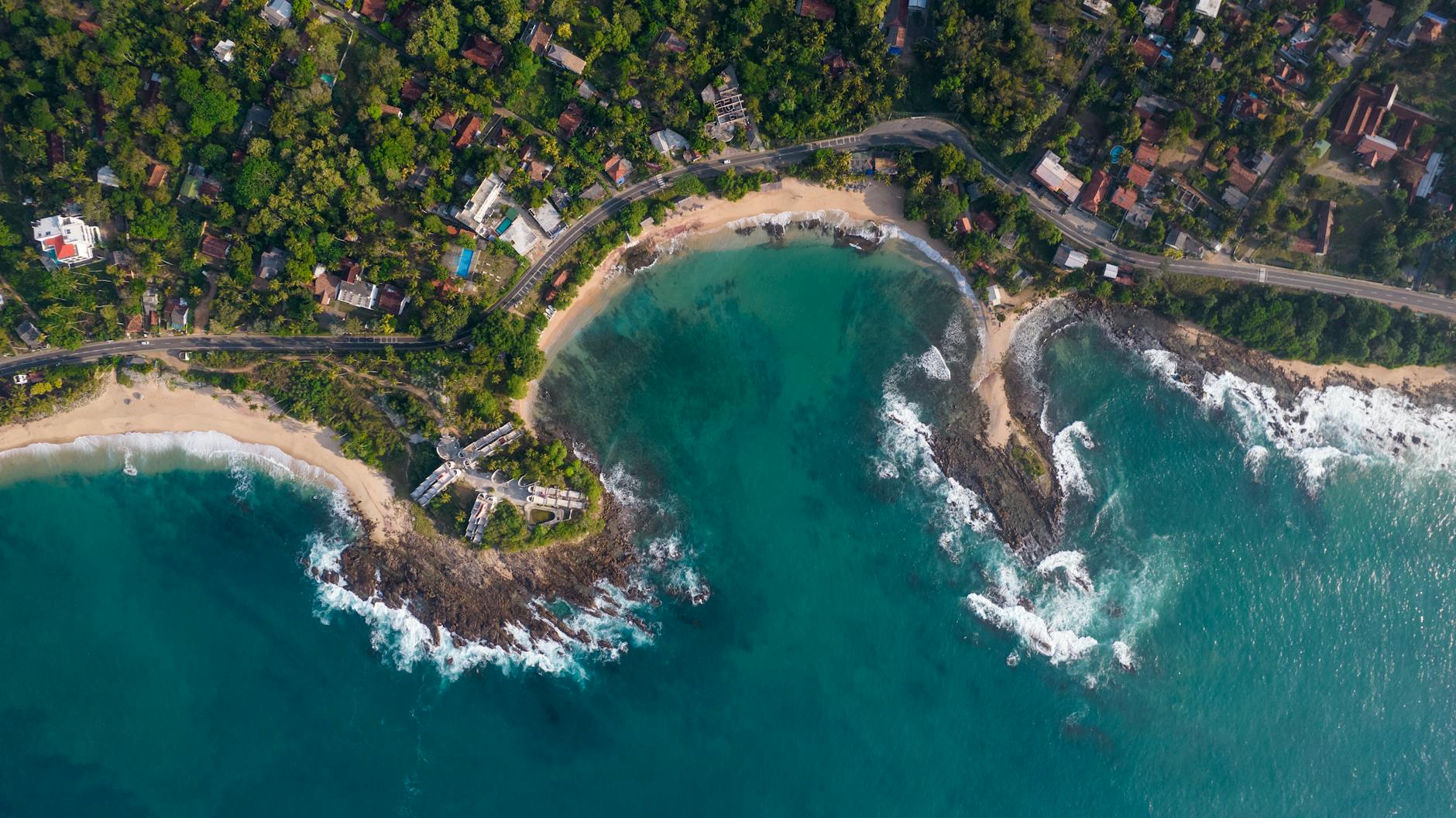
Have you ever dreamed of exploring a tropical paradise with pristine beaches, lush jungles, and ancient temples? 🌴🏯 Well, let me tell you about my recent adventure to Sri Lanka – a hidden gem that stole my heart and left me craving for more! As someone who’s traveled extensively, I can confidently say that Sri Lanka is a destination like no other.
I still remember the moment I stepped off the plane, feeling the warm breeze on my skin and inhaling the exotic scents of spices and tropical flowers. From that instant, I knew I was in for an unforgettable journey. But here’s the thing: planning a trip to Sri Lanka can be overwhelming. With so much to see and do, where do you even begin? That’s why I’ve decided to share my ultimate travel guide to Sri Lanka, packed with insider tips and personal experiences that will help you make the most of your visit.
In this comprehensive guide, I’ll take you through everything you need to know – from the best time to visit and must-see destinations to getting around and experiencing the mouthwatering cuisine. I’ll also share my insights on accommodation options, cultural etiquette, and thrilling adventure activities that will get your adrenaline pumping. So, buckle up and get ready for an exciting journey through the Pearl of the Indian Ocean! 🇱🇰✈️

Best Time to Visit Sri Lanka
As an avid traveler and Sri Lanka enthusiast, I’ve explored this beautiful island during various seasons. Let me share my insights on the best time to visit this tropical paradise.
Peak tourist seasons
Sri Lanka experiences two main peak tourist seasons:
- December to March (dry season)
- July to August (summer holidays)
During these periods, I’ve noticed:
- Higher hotel rates
- Crowded attractions
- Advance bookings are essential
| Season | Pros | Cons |
|---|---|---|
| Dec-Mar | Perfect beach weather, cultural festivals | Higher prices, crowded |
| Jul-Aug | Good for wildlife viewing, Kandy Esala Perahera | Busy, occasional rain |
Off-peak travel benefits
I’ve found that traveling during off-peak seasons can be rewarding:
- Lower accommodation prices
- Fewer tourists at popular sites
- More authentic local experiences
My favorite off-peak months are:
- April to June
- September to November
Weather patterns and seasons
Sri Lanka’s weather is influenced by two monsoon seasons:
- Southwest monsoon (May to September)
- Affects the west and southwest coasts
- Heavy rainfall, especially in June and July
- Northeast monsoon (October to January)
- Affects the north and east coasts
- Milder than the southwest monsoon
I’ve learned that the island’s compact size means you can usually find good weather somewhere, regardless of when you visit. For instance, when it’s raining in the west, the east coast often enjoys sunny days.
Now that we’ve covered the best times to visit Sri Lanka, let’s explore the must-visit destinations that make this island so special.

Must-Visit Destinations in Sri Lanka
As I’ve explored this enchanting island nation, I’ve discovered a wealth of incredible destinations that should be on every traveler’s itinerary. From ancient cities steeped in history to pristine beaches and lush wildlife sanctuaries, Sri Lanka offers a diverse range of experiences. Let me take you through some of the must-visit destinations I’ve encountered during my travels.
Ancient Cities and Cultural Sites
Sri Lanka’s rich history comes alive in its ancient cities and cultural sites. I’ve been awestruck by the following locations:
- Sigiriya: This ancient rock fortress, also known as Lion Rock, is a UNESCO World Heritage site.
- Anuradhapura: The sacred city with well-preserved ruins of an ancient Sri Lankan civilization.
- Polonnaruwa: Another ancient city with impressive stone sculptures and ruins.
Pristine Beaches and Coastal Areas
The island’s coastline is dotted with stunning beaches that I’ve thoroughly enjoyed. Some of my favorites include:
- Mirissa: Perfect for whale watching and surfing.
- Unawatuna: A picturesque bay with calm waters, ideal for swimming.
- Arugam Bay: A surfer’s paradise on the east coast.
Wildlife Sanctuaries and National Parks
Sri Lanka’s biodiversity is truly impressive. I’ve had unforgettable experiences at these wildlife hotspots:
| National Park | Key Attractions |
|---|---|
| Yala | Leopards, elephants, crocodiles |
| Udawalawe | Large elephant herds |
| Minneriya | Annual elephant gathering |
Tea Plantations and Hill Country
The misty hills of Sri Lanka’s tea country offer a refreshing change of scenery. I’ve loved exploring:
- Nuwara Eliya: Known as “Little England” for its colonial architecture.
- Ella: Famous for its scenic train ride and hiking trails.
- Horton Plains National Park: Home to the stunning World’s End viewpoint.
As we move on to discussing how to get around Sri Lanka, keep these incredible destinations in mind. They’re just a taste of what this beautiful country has to offer, and I can’t wait to share more about navigating between these wonders.

Getting Around Sri Lanka
Now that we’ve explored the must-visit destinations in Sri Lanka, let’s dive into the various transportation options available to help you navigate this beautiful island nation.
A. Hiring drivers
When it comes to exploring Sri Lanka, I’ve found that hiring a driver is one of the most convenient and comfortable options. Here’s why I recommend it:
- Stress-free navigation through unfamiliar roads
- Local knowledge and insider tips
- Flexibility in your itinerary
- Ability to relax and enjoy the scenery
| Pros | Cons |
|---|---|
| Convenient and comfortable | More expensive than public transport |
| Local expertise | Less independence |
| Flexible schedule | Potential language barriers |
B. Public transportation options
For budget-conscious travelers like myself, Sri Lanka’s public transportation system offers an affordable way to get around:
- Trains: Scenic routes, especially in the hill country
- Buses: Extensive network covering most of the island
- Tuk-tuks: Great for short distances within cities
C. Renting vehicles
If you’re feeling adventurous, renting a vehicle can be an exciting way to explore Sri Lanka. I’ve tried both options:
- Motorbikes: Perfect for solo travelers or couples
- Cars: Ideal for families or groups
Remember to familiarize yourself with local traffic rules and road conditions before opting for this choice.
D. Domestic flights
For those short on time, domestic flights can be a time-saver. I’ve used them to quickly hop between major cities and tourist hotspots. Key routes include:
- Colombo to Jaffna
- Colombo to Trincomalee
- Colombo to Batticaloa
While more expensive, flights can significantly cut down travel time, allowing you to make the most of your Sri Lankan adventure.
As we move forward, I’ll share some insights on accommodation options to help you plan where to stay during your travels across this diverse island.

Accommodation Options
When it comes to finding the perfect place to rest your head in Sri Lanka, I’ve got you covered. From opulent luxury resorts to charming budget-friendly guesthouses, there’s something for every traveler and budget. Let me walk you through the diverse accommodation options I’ve experienced during my travels in this beautiful island nation.
A. Luxury Resorts
For those seeking the ultimate indulgence, Sri Lanka’s luxury resorts are a dream come true. I’ve had the pleasure of staying at some of the most exquisite properties, where world-class amenities meet breathtaking views.
- Private infinity pools overlooking the Indian Ocean
- Spa treatments using traditional Ayurvedic techniques
- Gourmet dining experiences featuring local and international cuisine
- Personalized butler services
B. Boutique Hotels
If you’re looking for a more intimate and unique experience, I highly recommend Sri Lanka’s boutique hotels. These smaller, design-focused properties often showcase the country’s rich cultural heritage.
- Restored colonial mansions with modern amenities
- Individually decorated rooms reflecting local art and craftsmanship
- Personalized service and attention to detail
- Often located in prime city or beachfront locations
C. Budget-Friendly Guesthouses
For budget-conscious travelers like myself, Sri Lanka offers an abundance of affordable guesthouses that don’t compromise on comfort or hospitality.
- Family-run establishments providing a warm, local experience
- Clean and comfortable rooms at a fraction of the cost of larger hotels
- Opportunities to connect with fellow travelers and locals
- Often include homemade Sri Lankan breakfast
D. Unique Stays
For those seeking an extraordinary experience, I’ve discovered some truly unique accommodation options in Sri Lanka:
| Type of Stay | Features | Location Examples |
|---|---|---|
| Treehouses | Elevated rooms, jungle views | Sigiriya, Ella |
| Eco-lodges | Sustainable practices, nature immersion | Yala, Sinharaja |
| Glamping | Luxury tents, wilderness experience | Wilpattu, Udawalawe |
These distinctive stays offer an unparalleled connection with Sri Lanka’s natural beauty and wildlife. I’ve found that waking up to the sounds of the jungle or falling asleep under the stars adds an extra layer of magic to any Sri Lankan adventure.
Now that we’ve explored the diverse accommodation options, let’s dive into one of my favorite aspects of Sri Lankan culture – its mouthwatering cuisine and dining experiences.

Sri Lankan Cuisine and Dining
Now that we’ve covered accommodation options, let’s dive into the mouthwatering world of Sri Lankan cuisine and dining experiences. As someone who’s explored the culinary landscape of this beautiful island, I can’t wait to share my insights with you.
Cooking Classes and Food Tours
One of the best ways to immerse yourself in Sri Lankan cuisine is through cooking classes and food tours. I’ve participated in several, and they’ve been eye-opening experiences. Here’s a quick comparison of my favorite options:
| Experience | Duration | Price Range | What You’ll Learn |
|---|---|---|---|
| Colombo Cooking Class | 3-4 hours | $30-$50 | Traditional curries, hoppers |
| Galle Food Tour | 2-3 hours | $25-$40 | Street food, seafood specialties |
| Kandy Spice Garden Tour | 1-2 hours | $15-$25 | Spice identification, uses in cooking |
Fine Dining Restaurants
While street food is a must-try, I also recommend indulging in Sri Lanka’s fine dining scene. Some of my top picks include:
- Ministry of Crab, Colombo: Famous for its gigantic lagoon crabs
- Botanik Rooftop Bistro & Bar, Colombo: Fusion cuisine with stunning city views
- The Fortress Resort & Spa, Galle: Beachfront dining with a mix of local and international dishes
Must-Try Local Dishes
Sri Lankan cuisine is a flavor explosion, and there are several dishes you absolutely must try:
- Rice and Curry: A staple meal with various curries
- Kottu Roti: Chopped roti stir-fried with vegetables and meat
- Hoppers: Bowl-shaped pancakes often served with egg
- String Hoppers: Steamed rice noodles typically eaten for breakfast
- Lamprais: Rice and curries wrapped in banana leaf and baked
Street Food Experiences
To truly experience Sri Lankan cuisine, you’ve got to hit the streets. Here are some of my favorite street food experiences:
- Galle Face Green, Colombo: Try the isso wade (prawn fritters) and acharu (pickled fruits)
- Pettah Market, Colombo: Sample fresh tropical fruits and spicy snacks
- Kandy Central Market: Taste local sweets like konda kavum and aluwa
Next, we’ll explore the cultural etiquette and customs you should be aware of during your Sri Lankan adventure.

Cultural Etiquette and Customs
As I explore Sri Lanka, I’ve learned that understanding and respecting the local customs is crucial for a meaningful travel experience. Let me share some insights on cultural etiquette that I’ve picked up along the way.
Dress codes for temples and religious sites
When visiting temples and religious sites in Sri Lanka, I always make sure to dress modestly. Here’s a quick guide I follow:
- Cover shoulders and knees
- Remove shoes and hats before entering
- Avoid wearing revealing clothing
Greeting and interaction norms
I’ve found that Sri Lankans are incredibly warm and welcoming. Here are some interaction norms I’ve observed:
- Use the traditional greeting “Ayubowan” with palms pressed together
- Address elders and monks with respect
- Avoid public displays of affection
Tipping practices
Tipping in Sri Lanka can be a bit confusing, but I’ve developed a system that works well:
| Service | Tipping Recommendation |
|---|---|
| Restaurants | 10% if service charge not included |
| Taxis | Round up to nearest 100 rupees |
| Hotels | 100 rupees per bag for porters |
| Tour guides | 500-1000 rupees per day |
By following these cultural etiquette guidelines, I’ve found that my interactions with locals are much more positive and enriching. It’s amazing how a little cultural awareness can go a long way in making your Sri Lankan adventure truly unforgettable.

Adventure Activities in Sri Lanka
Now that we’ve covered the cultural aspects of Sri Lanka, let’s dive into the exciting world of adventure activities this beautiful island has to offer. As an avid thrill-seeker, I’ve explored many of Sri Lanka’s adventure hotspots, and I’m excited to share my experiences with you.
A. Surfing hotspots
Sri Lanka is a surfer’s paradise, and I’ve caught some of the best waves of my life here. The island’s southern and eastern coasts offer excellent surfing opportunities for beginners and pros alike. Here are some of my favorite spots:
- Arugam Bay: Known for its world-class point break
- Weligama: Perfect for beginners with its gentle waves
- Mirissa: Great for intermediate surfers
| Location | Best for | Best time to visit |
|---|---|---|
| Arugam Bay | Experienced surfers | April to October |
| Weligama | Beginners | November to April |
| Mirissa | Intermediate surfers | November to April |
B. Hiking and trekking trails
As someone who loves to explore on foot, I can attest that Sri Lanka’s diverse landscapes offer incredible hiking experiences. Some of the most breathtaking trails I’ve conquered include:
- Adam’s Peak: A challenging night hike to witness a stunning sunrise
- Ella Rock: A moderate trek with rewarding panoramic views
- Horton Plains National Park: Home to the famous World’s End cliff
C. Water sports and diving locations
Sri Lanka’s crystal-clear waters are perfect for various water activities. I’ve had unforgettable experiences:
- Scuba diving in Unawatuna: Exploring vibrant coral reefs and shipwrecks
- Kitesurfing in Kalpitiya: Riding the wind in one of Asia’s best kitesurfing destinations
- White water rafting in Kitulgala: Navigating thrilling rapids on the Kelani River
D. Wildlife safaris
My adventures wouldn’t be complete without mentioning Sri Lanka’s incredible wildlife safaris. I’ve had close encounters with majestic creatures in:
- Yala National Park: Famous for its leopard population
- Udawalawe National Park: A sanctuary for elephants
- Minneriya National Park: Home to the spectacular ‘Elephant Gathering’
Next, we’ll explore the shopping scene and souvenirs you can bring back to remember your Sri Lankan adventure.

Shopping and Souvenirs
As we explore the vibrant world of Sri Lankan shopping, I’m excited to share my insights on the best souvenirs and where to find them. From intricate handicrafts to aromatic teas, Sri Lanka offers a treasure trove of unique items to bring home.
A. Traditional handicrafts
Sri Lanka’s rich cultural heritage is reflected in its stunning array of handicrafts. I’ve found some of the most beautiful pieces during my travels:
- Masks: Colorful and intricate, these are used in traditional dances
- Batik textiles: Vibrant fabrics with intricate patterns
- Lacquerware: Beautifully decorated bowls, boxes, and ornaments
- Wood carvings: Intricately carved figurines and decorative items
B. Tea and spices
No trip to Sri Lanka is complete without bringing home some of its world-famous tea and aromatic spices:
| Tea Varieties | Popular Spices |
|---|---|
| Ceylon Black | Cinnamon |
| Green Tea | Cardamom |
| White Tea | Cloves |
| Herbal Blends | Black Pepper |
I always make sure to visit a tea plantation to taste and purchase directly from the source.
C. Gemstones and jewelry
Sri Lanka, also known as “Ratna-Dweepa” (Gem Island), is famous for its precious stones. I’ve found some exquisite pieces:
- Sapphires in various colors
- Rubies and garnets
- Moonstones and cat’s eye
- Handcrafted silver jewelry
Remember to purchase from reputable dealers and ask for certificates of authenticity.
D. Best markets and shopping districts
For the ultimate shopping experience, I recommend exploring these vibrant markets and districts:
- Pettah Market, Colombo: A maze of streets filled with everything from spices to textiles
- Galle Fort: Charming boutiques selling handicrafts and jewelry
- Kandy Central Market: Great for spices and traditional items
- Laksala: Government-run emporiums with fixed prices, perfect for hassle-free shopping
When shopping in Sri Lanka, don’t forget to haggle in local markets – it’s expected and part of the fun! Next, we’ll delve into some essential health and safety tips to ensure your Sri Lankan adventure is as smooth as possible.

Health and Safety Tips
As I’ve traveled extensively through Sri Lanka, I’ve learned a thing or two about staying safe and healthy during your visit. Let me share some essential tips to ensure your trip is both enjoyable and worry-free.
A. Vaccinations and medical precautions
Before embarking on your Sri Lankan adventure, I always recommend checking with your doctor about necessary vaccinations. Here’s a quick list of what I typically suggest:
- Hepatitis A and B
- Typhoid
- Tetanus
- Japanese Encephalitis (if visiting rural areas)
Don’t forget to pack:
- Mosquito repellent
- Sunscreen
- Any personal medications
B. Travel insurance recommendations
I can’t stress enough how important travel insurance is. Here’s a comparison of what I look for in a good policy:
| Feature | Basic Plan | Comprehensive Plan |
|---|---|---|
| Medical coverage | ✓ | ✓ |
| Trip cancellation | ✗ | ✓ |
| Lost baggage | ✗ | ✓ |
| Adventure activities | ✗ | ✓ |
I always opt for comprehensive coverage to ensure I’m protected in any situation.
C. Emergency contact information
Keep these numbers handy:
- Police: 119
- Ambulance: 110
- Tourist Police: 1912
- My embassy’s contact information
I also recommend saving local hospital numbers for the areas you’re visiting.
D. Safety advice for solo travelers
As a solo traveler, I’ve found Sri Lanka to be generally safe, but it’s always wise to take precautions:
- Stay aware of your surroundings
- Avoid walking alone at night in unfamiliar areas
- Use reputable transportation services
- Trust your instincts
I’ve found that joining group tours or making friends with other travelers can enhance both safety and enjoyment.
Now that we’ve covered these crucial health and safety tips, you’re well-prepared for your Sri Lankan adventure. Remember, a little preparation goes a long way in ensuring a smooth and memorable trip.
Sri Lanka truly is a hidden gem in South Asia, offering a perfect blend of natural beauty, rich culture, and unforgettable experiences. From the best time to visit and must-see destinations to practical tips on transportation, accommodation, and local customs, I’ve covered all the essentials to help you plan your dream trip to this tropical paradise.
As you embark on your Sri Lankan adventure, remember to immerse yourself in the local culture, savor the delicious cuisine, and respect the customs of this beautiful island nation. Whether you’re lounging on pristine beaches, exploring ancient ruins, or trekking through lush tea plantations, Sri Lanka has something for every traveler. So pack your bags, embrace the warmth of Sri Lankan hospitality, and get ready for an incredible journey that will leave you with memories to last a lifetime.


0 Comment